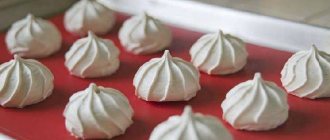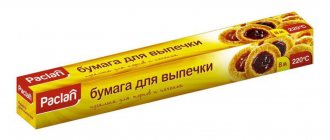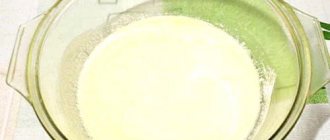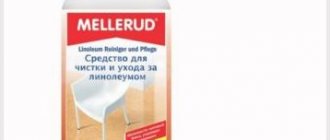Guests are on the doorstep, a recipe for a delicious pie or cookies is in store, but suddenly the hostess discovers that the stock of special baking paper has run out. There is no time to buy a new one anymore. How to replace parchment paper for baking? If the hostess is young, then it won’t take long to get confused and upset. But there’s nothing to worry about, there is always the opportunity to find an alternative to culinary parchment. Especially when you consider that it is used for baking relatively recently. Let's figure it out in order.
We use tracing paper
Tracing paper, used for drawings and patterns in sewing, is somewhat similar in quality to baking parchment, but it is thinner. It is quite suitable as a replacement. This is convenient for those housewives who love not only cooking, but also sewing. Before use, both the baking sheet and the tracing paper are usually well greased with oil. The disadvantages of tracing paper are:
- sticks to the bottom of the product;
- becomes brittle, crumbles, and can char at high temperatures in the oven.
However, tracing paper is suitable for baking shortbread cookies, cheesecake, and products with a high oil content in the dough.
Oil lubrication
If none of the above options work for you, just go back to basics. You can grease pans or baking dishes. Use butter, vegetable, olive or coconut oil for this. The butter will give the dough a little richness and a golden brown color.
Once you have greased your pan or baking dish, you will need to sprinkle it with a little flour or semolina. Turn the pan upside down and tap the bottom to remove any excess.
To be honest, I have never been able to use flour and butter well. So I just oil it.
Foil will work too
Many novice cooks ask on forums whether foil is suitable for baking in the oven instead of parchment paper? In cooking, foil is often used for baking fish, vegetables, and meat, preserving the juiciness of the food well. It can also replace baking paper. The foil is greased with oil before use.
Disadvantage: the metallized base increases the surface temperature. If you miss a certain moment, the baked goods may burn. Therefore, it is used only occasionally for making cookies, pies and biscuits.
Tip: Foil, parchment, special forms
Typically, foil is used for baking vegetables, meat and fish, but if necessary, it can also be used as a replacement for parchment paper for baking. To do this, it should be lubricated with oil. Baking on foil can sometimes burn as it increases the baking temperature.
One type of parchment is
subparchment. This type of special paper used in the confectionery industry is intended for baking at low temperatures - 100 - 170 ° C. Subparchment is able to retain fat, but does not retain moisture. Its advantages include high environmental safety.
Silicone technology
Products made from silicone, a modern, practical, universal material, are becoming increasingly popular and are finding more and more applications. Many housewives already have them in their kitchens and have become favorites:
- Silicone forms;
- silicone coated parchment;
- silicone mats.
Silicone molds for cakes, cookies, and bread do not need to be greased, baked goods do not burn in them, and the products are easily removed. They are easy to clean, but may darken on the inside. Before filling with dough, the silicone mold must be placed on a baking sheet or other stable surface and removed from the oven along with the baking sheet so that the products do not fall out or become deformed.
Silicone-coated parchment can withstand oven temperatures up to 300˚ C. It can be reused 7-10 times. Baked goods do not burn, products on it do not dry out, and are easily separated from the surface. This base is well suited for meringues, sponge cakes, and cake layers.
Silicone mats have universal application. Some have special markings for rolling out and cutting the dough. They can replace parchment paper when baking by lining a pan or baking sheet. This substrate can withstand high temperatures well. The only limitation is that you cannot cut on a hot mat.
A common drawback of all silicone assistants is their rather high cost.
Baking paper (parchment)
Thanks to its versatility, baking paper is a shining star in the kitchen. It is odorless, made from cellulose, often coated with a thin layer of silicone, and is resistant to heat and moisture.
- Baking paper is suitable for solving many culinary problems, but most often it is used to line molds and baking sheets so that the ingredients of the dish do not stick to the dishes during baking/roasting. When used this way, paper makes serving food much easier. It becomes possible to “remove” the finished dish and transfer it from the mold to plates directly on paper. And it’s even easier to wash kitchen utensils. To make it easier to place the parchment in any shape, the paper can be crumpled and, if desired, wet. Then straighten it, shaking off excess water, and line heat-resistant containers in this form. This way the paper will fill all the corners, no matter how complex the shape of your containers.
- On paper folded 2-3 times, you can cut and grind food. This comes in handy when chopping richly flavored smoked fish or beets that stain wooden cutting boards.
- Use paper to roll out the dough if you need a thin sheet, for example, for homemade noodles. It is enough to place the paper on the already slightly rolled out dough (or place it between two sheets), and then, without removing the sheet and using a rolling pin, get a layer up to several millimeters thick.
- Grind cookies, peppercorns, nuts and caramel between two sheets of paper. Use a rolling pin, a kitchen hammer or a masher for this - it all depends on the desired result.
- Twist a sheet of paper into a pound, and now in front of you is a funnel for bulk products.
- If you fix the baking paper on a grater, you can grate the citrus zest smaller and more conveniently. Most of the zest will remain on the paper and will not get stuck in the small cells of the grater.
- You can cut out snowflakes and other stencils from baking paper to decorate biscuits. Simply place the prepared sheet on the cake and sprinkle it with powdered sugar or nut crumbs.
Despite its versatility, baking paper has its limitations. It usually withstands temperatures up to 200-210 °C. At higher temperatures, the paper darkens, becomes brittle and crumbles when touched. It might even catch fire. For safety reasons, before use, study the recommendations for using paper from a specific manufacturer, since paper from different brands differs in properties and temperature conditions.
What else do you use to cover molds and baking sheets, besides baking paper? For example, foil, but it must be lubricated with fat, for example, vegetable oil.
Recipe for sea bream baked in the oven using baking paper
Dorado baked in the oven using baking paper
To prepare 4 servings you need:
- 4 sea breams, 300 g each
- 4 cloves garlic
- 1 large lemon
- 5-6 sprigs of parsley
- 1 onion
- 100 g wheat bread crumbs + for sprinkling
- olive oil
- salt and freshly ground black pepper
- baking paper “Freken Bock”, 4 sheets 55-60 cm long
- If the fish has scales, clean and gut it. Don't cut off the head.
- Crush the peeled garlic cloves with the wide side of a knife. Cut the lemon in half. Cut one half into thin circles, squeeze the juice out of the second, avoiding the seeds. Finely chop the parsley and onion.
- Beat a mixture of 6 tbsp in a blender bowl. l. olive oil, lemon juice, parsley, onion, salt and pepper until smooth.
- Add crumbs and leave for 5-7 minutes. The crumbs should swell and increase in size by 2-3 times. Breadcrumbs are not suitable for cooking sea bream, unless they are panko breadcrumbs.
- Preheat the oven to 180°C.
- Place each fish on a large sheet of baking paper. In this case, it is better to use a baking sheet for baking rather than a baking dish, so you cannot do without paper.
- Place a few slices of lemon and a clove of garlic on the fish. If you want the fish baked in the oven to have a brighter taste, put additional lemon slices into the belly of the sea bream, after rubbing it with a mixture of salt and freshly ground pepper. Sprinkle the dorado with bread crumbs. Drizzle with remaining olive mixture.
- Pack the fish hermetically so that when the sea bream is baked, all the steam remains inside the paper “envelope”. Just leave a little free space around the fish - there is no need to wrap the sea bream tightly.
- Bake in a preheated oven for 15-20 minutes. or until fully cooked. Place the envelopes on plates, cut upwards, and unfold the paper. Drizzle the fish with olive oil and serve.
Wax paper
Waxed paper is the same as baking paper, but without silicone, just repeatedly coated with wax. It should be chosen for working with chocolate, for example, for creating chocolate decorations.
Unlike baking paper, wax paper should not be cooked. Do not use it in the oven or microwave. The wax will melt and may cause a fire.
The only exception to this rule is that you can line the bottom of an ovenproof baking dish with wax paper. Because the batter will completely cover the paper and absorb most of the heat in the oven, the wax paper will survive baking. But be careful and attentive!
Office and writing paper - a compromise option
In extreme cases, if the above-mentioned substitutes for parchment paper are not found, use ordinary office paper, well soaked in oil. In addition to it, you can also use writing paper, although it is less common today than office paper. Printer paper is thicker than writing paper and is less likely to catch fire in the oven.
This solution is suitable for students and office workers; they always have such paper at hand. However, many professionals believe that such a replacement is unsuccessful. The product sticks to such paper and may become deformed, lose its shape, or burn.
For several years now, many housewives have been using paper baking dishes that have appeared on sale. They make finished products more elegant and can replace traditional baking paper.
What should not be used to replace parchment paper?
- Newspapers should not be used as a substitute for parchment paper because they are easily flammable and are also a source of toxic substances contained in printing ink.
- Written paper.
- Unoiled writing paper.
- Polyethylene because it melts under high temperatures.
The means at hand will always come to the rescue if the kitchen runs out of parchment paper for baking, allowing you to please your loved ones with delicious homemade baked goods.
Or maybe just grease the sheet?
When making casseroles, shortbread cookies, or apple pie, it is quite acceptable to simply grease a baking sheet or baking sheet with butter, sprinkle with flour, and shake off the excess. You can use crackers instead of flour. Teflon-coated pans greased with oil will also prevent baked goods from burning and sticking to the sides and bottom of the pan.
Advice! Do not use this method when baking meringues and macarons: they will stick to the baking sheet.
Baking bag and flour packaging
Baking paper can be replaced with a regular baking bag. The bags have high resistance to hot temperatures. It is better to use packages as a last resort, when there are no other means at hand. The product will prevent baked goods from burning - this is its only benefit.
Have you noticed what the flour packaging is made of? Its properties are very similar to parchment. Often this is ordinary baking paper. Pour the flour into a separate container, lightly oil the packaging and start baking. Place the dough on the inside of the package to prevent the paint from imprinting on your pies.
Available means
The ingenuity of our women and their practicality have long been noticed and appreciated. Here are a few improvised means that experienced housewives use instead of baking paper:
- sleeve for baking;
- cut parchment flour bag (white side facing baking);
- butter pack wrappers without foil;
- subparchment, which is used in the packaging of confectionery products;
- clean notebook sheets soaked in oil.
When using lined or patterned paper, you need to remember that they can be imprinted on the baked goods. If the packaging of butter or flour can be turned with the white side up, then the notebook sheets are completely lined, so they will leave marks on the baked goods with almost one hundred percent probability.
Such improvised means, unfortunately, do not always cope with their task. Often the dish still burns or becomes deformed. However, they can be used as an emergency option.
What is its peculiarity
Parchment paper is specifically designed for baking. It does not allow grease and water to pass through and is highly durable. Food baked on parchment does not lose its taste and does not absorb foreign odors. Baked goods do not dry out or burn. For baking, only food parchment is used; it does not contain any impurities dangerous to humans.
Is it possible to replace such a useful household item? The answer is yes! Available means include:
- writing paper,
- tracing paper,
- silicone molds and mats,
- foil,
- baking bags,
- flour packaging.
Kitchen safety
Preparing meals for the whole family, for guests, and using kitchen appliances is always associated with some threats and dangers. In addition to high temperatures, open fire, electricity, sharp objects, there is also the danger of harmful substances getting into food, which can lead to digestive problems, poisoning, and allergic reactions. We are talking not only about E. coli or microorganisms that get into food due to violations of hygiene rules.
Toxic substances can be released from materials when heated in an oven or microwave. To prevent this from happening, so as not to spoil the holiday for guests, family members and yourself, it is strictly not recommended to use instead of parchment for baking:
- newspapers (printing ink is extremely toxic when heated);
- paper with text printed on a printer or written on with paste;
- a regular plastic bag (it will melt and the baked goods will be ruined);
- thin paper without oiling (it may crumble or catch fire).











